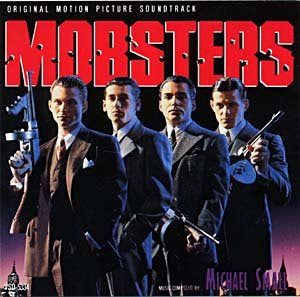.
 There is a brief presentation on the ARCA blog of Kimberly Alderman’s views on the relationship between the illicit antiquities trade and organized crime as presented in the San Francisco session last week (‘ARCA Student Kim Alderman Presents "Honor Amongst Thieves"‘). She agrees with the interviewer Catherine Schofield Sezgin that “organized crime is involved in the illicit antiquities trade”, but “if you are talking only about mobsters or the mafia, then there is less evidence to support the alleged connection”, though admitting that “there has certainly been increasingly organized subversion in the illicit antiquities trade since then, although whether the 1960s served as a temporal starting point for such organization remains to be seen”. Answering a question, she says: “Claims that the illicit antiquities trade is connected with money laundering, extortion, the drug and arms trades, terrorism, and slavery, should be taken individually”. There are discrete instances of this which she argues “serve as indicators of a potential connection – not hard evidence”.
There is a brief presentation on the ARCA blog of Kimberly Alderman’s views on the relationship between the illicit antiquities trade and organized crime as presented in the San Francisco session last week (‘ARCA Student Kim Alderman Presents "Honor Amongst Thieves"‘). She agrees with the interviewer Catherine Schofield Sezgin that “organized crime is involved in the illicit antiquities trade”, but “if you are talking only about mobsters or the mafia, then there is less evidence to support the alleged connection”, though admitting that “there has certainly been increasingly organized subversion in the illicit antiquities trade since then, although whether the 1960s served as a temporal starting point for such organization remains to be seen”. Answering a question, she says: “Claims that the illicit antiquities trade is connected with money laundering, extortion, the drug and arms trades, terrorism, and slavery, should be taken individually”. There are discrete instances of this which she argues “serve as indicators of a potential connection – not hard evidence”.I think several more complex arguments have become conflated into a brief presentation here. The interviewer was facing Alderman with a question whether the whole illicit antiquities trade since the early 1960s had been “fuelled by organized crime”. That obviously is a singularly unhelpful question, and of course the answer is no. Much of the minor antiquities trade which is the staple of the industry today is clearly a private initiative of individuals.
I think that in general, we do not differentiate different (but probably overlapping) sectors of this trade enough both in terms of scope and mechanisms. I also feel very strongly that the antiquities trade of 2010 is absolutely nothing like that of the 1960s (or 1970s when the UNESCO Convention was written which makes the latter as much use as chocolate fire doors).
I really am unclear where the date “1960” comes from, it seems to me that the conditions for the present criminal trade of antiquities came into being with internet trading (and money transfer) from the mid 1990s. The fall of social systems and the rise of organized crime in much of eastern Europe from 1989 was a major feature in the digging up and smuggling of vast amounts of material from eastern Europe (the classic example is Bulgaria on which an entire system of trade has been built in the US coin and minor antiquities market with nothing being done by US authorities to stop it). The same thing happened with the drug trade when the traditional trade routes from the Near East to Europe were disrupted by the wars in former Yugoslavia. There are also trends, in the 1990s the Russian (and Belorussian and Ukranian) organized criminal groups were moving large numbers of illicitly-exported icons and other artworks west. Today that trade has to some extent dried up (at least as seen on the Polish border) but dugup minor antiquities from both Crimean and northwest "Russian" sources (I am thinking here of metalwork obviously plundered from burial mounds and cemeteries in the Ladoga region - sold as "Viking") are moving west in increasing numbers. The link with organized criminal groups able to ensure their illegal export seems in many cases likely.
More to the point, surely it matters not whether the whole trade is in the hands of organized crime or “just” a percentage of it. In order for responsible dealers and collectors becoming part of the network of distribution, differentiating the dodgy stuff from the more licit stuff means that (unless the pollution of the market does not induce them to give up buying totally on ethical grounds) collectors should be exercising far more caution than it seems they are at present, thus forcing the dealers to do so too.
Vignette: Mobsters.







2 comments:
Hi Paul! Thanks for the post. :) The only thing I would clarify is that the indicators quote applies to terrorism specifically, not to all the listed allegedly connected crimes. For instance, there is hard evidence that purchasing (sometimes illicit) antiquities is used for money laundering.
Thanks again!
Kimberly
Point taken about the indicators, sorry.
I'd urge you if you are going to carry on studying this topic to look at the eastern European stuff in more detail, it seems to have direct relevance to the US market.
I have always wanted to know more about the Chinese antiquities trade,anecdotally linked by dealers and collectors with criminal organizations, though I have not looked into it myself.
Post a Comment